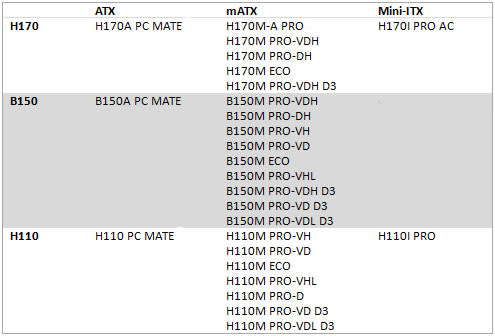More Intel 100 series motherboards: H170, H110, and B150 chipset boards unveiled
The Skylake platform is booming
Intel Z-class chipset based motherboards (such as the Z170) can be pricey, and not everyone needs the entire feature set they offer. If you want to take advantage of the new sixth-generation Intel Skylake CPUs and just want to pay for what you need, you’re in luck now.
Following the official launch of a massive number of Skylake processors, several of the major motherboard brands have now released entire fleets of other Intel 100 series boards, including H170, H110, and B150 boards, so you should be able to find a board that provides the best bang for your buck.
With scaled-back features like fewer SATA ports and no overclocking support, the more mainstream and business-oriented Intel 100 series chipsets focus on delivering the essentials to casual users and businesses. Other things to expect include variants of the same board that differ only in their support for either DDR3L or DDR4 memory.
ASRock
ASRock has rolled out a full slate of H170, H110, and B150 boards spanning the mini-ITX to ATX form factors, including a handful of gaming-oriented boards in ASRock’s Fatal1ty series. Clearly, gaming isn’t the sole prerogative of the Intel Z170 chipset.
The ASRock Fatal1ty H170 Performance sits at the top of the lineup. But because the H170 chipset does not support unlocked -K suffix processors for overclocking, some of the motherboard’s components like the power delivery system have been scaled back to keep costs down.
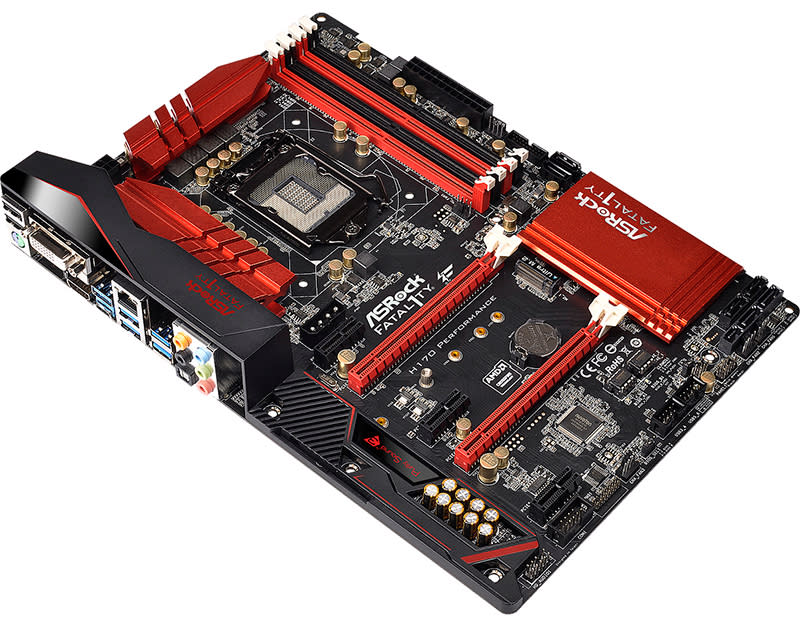
For instance, it’s lacking the beefed-up 60A power chokes on the Z170 Gaming K6+, and sports a 10-phase power design instead of the 12 on the latter board. However, a decent selection of features has still made it over, including the XXL aluminium alloy heatsink, an I/O shield, and a PCIe 3.0 x4 M.2 slot.
For non-gamers, a particular segment of ASRock’s boards stands out because of their ability to accept both DDR3 and DDR4 RAM. The memory slots are keyed differently for both memory types, so this is actually quite a big deal because it means that you’ll be able to re-use DDR3 memory from your old system. And given that DDR4 is still quite expensive, the option to recycle their RAM should appeal to budget-conscious users who are looking at Intel’s lower-end 100 series chipsets. On the other hand, DDR4 support means that users will still retain the option to upgrade to higher-performing memory if they wish.
If you are thinking of recycling your old memory, take note that Skylake supports lower voltage DDR3 modules such as those that confer to the DD3L specs. As long as your DDR3 memory modules can operate at a lower voltage range that's similar to DD3L, you should have no problems using them (most of the recent non-overclocking DDR3 memory modules that run at 1.5V or less should qualify).
ASRock has announced four such “Combo” motherboards – the H170 Combo, B150 Combo, B150M Combo-G, and the H110M Combo-G. As you may have guessed, the two with the -M suffix are micro-ATX boards, while the others are ATX offerings.
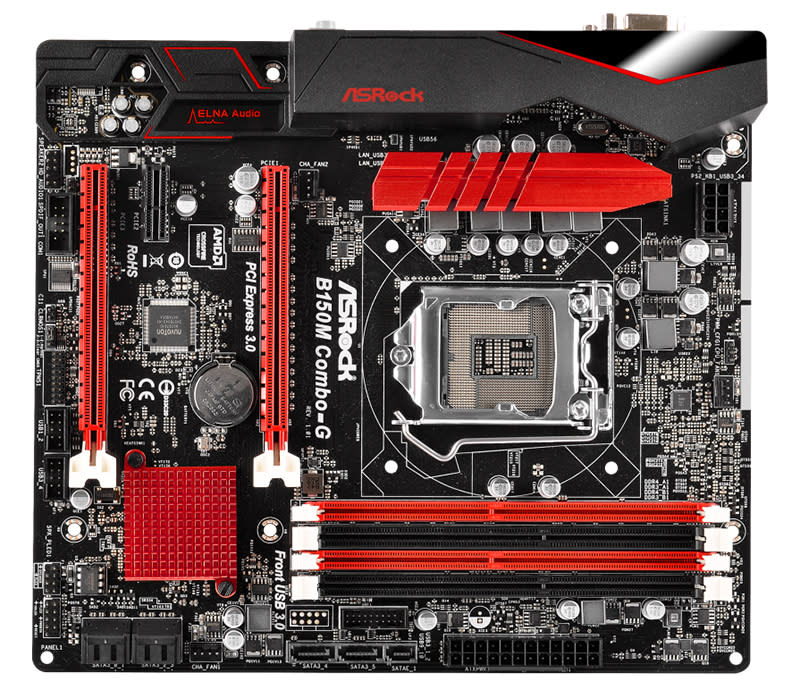
The ATX boards will come with four DDR3 and two DDR4 slots, while the mATX boards will have just two of each.
The remaining ASRock boards offer varying combinations of storage options and support for either DDR3/DDR3L or DDR4 RAM. Boards with the “/D3” appended to their names will support DDR3 memory only, and this naming methodology is also used by other board manufacturers.
ASUS
This new wave of ASUS motherboards hews to similar categories as its Z170 boards. Republic of Gamers (ROG) branded boards are understandably missing, but there are boards in the Signature, The Ultimate Force (TUF), and Pro Gaming lineups.
ASUS Signature boards include key usability features like overvoltage protection, EZ Flash 3 for quick BIOS updates, and USB Type-C and M.2 connectivity on select boards. All of the boards also come with LED-illuminated trace paths to highlight the shielded audio circuitry.
The case-mounting holes on the motherboards have even been cleared of components, thus minimizing the risk of damage and short circuits caused by contact.
The ASUS H170-Pro is the flagship board in the Signature series, complete with DDR4 support and USB Type-C connectivity. It comes with ASUS’ 5X Protection II hardware safeguard features including overvoltage and overcurrent protection for chipset components and the DRAM, digital voltage regulation, a stainless steel rear I/O panel, and a LANGuard EMI cover for a more reliable network connection.
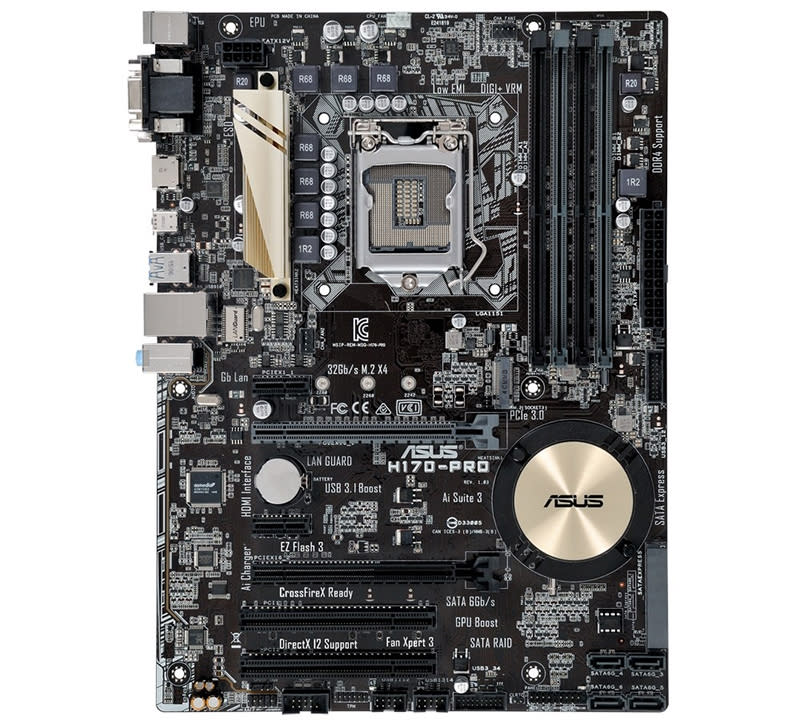
As expected, the TUF motherboards have been designed with durability in mind. TUF Trooper boards are intended to be a more affordable entry point into the series, so ASUS has attempted to preserve the key focus on stability and reliability while stripping away extraneous features. According to ASUS, the boards continue to undergo rigorous testing for reliability and include features like TUF ESD Guards 2 to protect ports against electrostatic discharge and TUF Thermal Radar Core, which offers control over individual system fans.
The Trooper B150 D3 is an entry-level ATX board in the TUF series. It lacks the Thermal Armor found on boards like the Z170 Sabertooth Mark I, but it does come with the aforementioned TUF features for improved reliability, protection against electrostatic discharge, and temperature control.

The D3 suffix also means that the board supports only DDR3/DDR3L memory, so you’ll be able to re-use the memory from your old system. However, do note that it has only two DIMM slots for a total of 32GB of RAM - that is if you can afford to stock it with expensive 16GB memory modules.
The audio shielding traces are backlit to further jazz up the board’s aesthetics.
Finally, the Pro Gaming boards come with familiar gaming-oriented features like SupremeFX audio, Sonic Radar II, and a bunch of features to boost reliability called Gamer’s Guardian. The latter consists of ASUS’ Digi+ digital voltage regulation modules, overcurrent protection for DRAM, and more durable capacitors.
The H170 Pro Gaming shares many features with its Z170 counterpart, including a single M.2 slot that supports both SATA and PCIe devices. However, it will only support DDR4 RAM up to 2133MHz and lacks support for NVIDIA SLI.
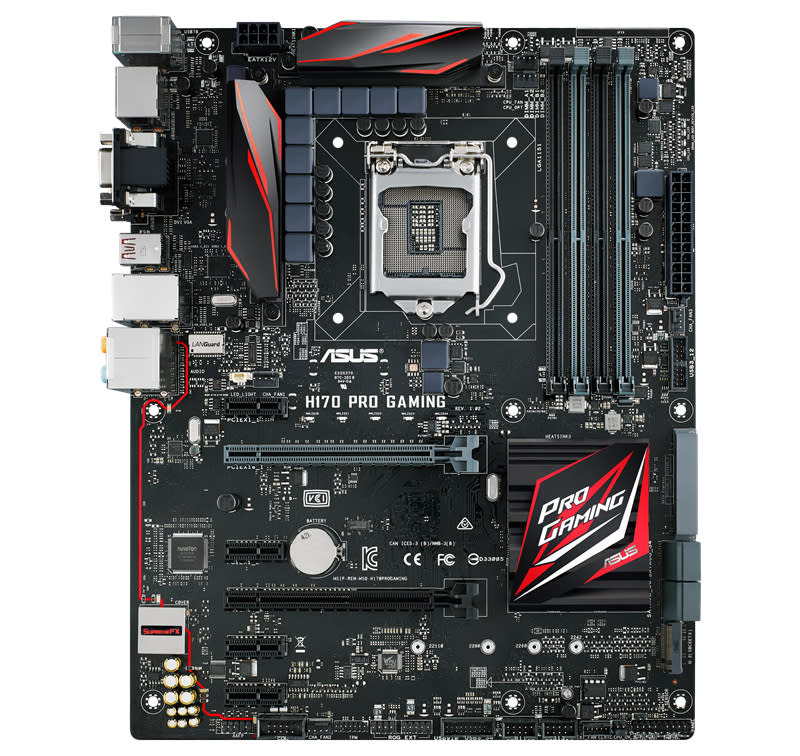
But even though AMD quad-GPU CrossFireX is listed as being officially supported, the H170 chipset does not allow the 16 PCIe 3.0 lanes from the CPU to be split among multiple GPUs, so multi-GPU performance is still limited since it will have to rely on the four PCIe 3.0 lanes from the chipset.
Gigabyte
Gigabyte has announced 14 new H170 and B150 boards in its Gaming and Ultra Durable product lines, adding to its line-up of Z170 motherboards.
The H170 Gaming 3 looks to go after gamers on a budget with key gaming-oriented features like the Killer E2200 ethernet controller, upgraded audio components, and a striking red-and-black color scheme. It is also one of the only boards here to come with metal shielding on the PCIe slots to support heavier graphics cards.
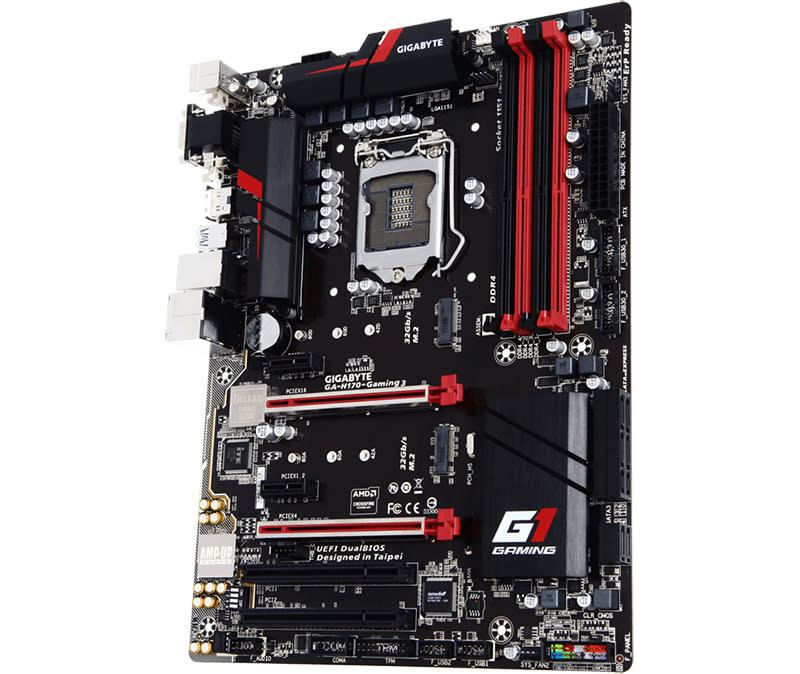
Another standout feature would be the presence of dual PCIe 3.0 x4 M.2 slots. The H170 chipset still supports RAID configurations, so you should be able to run dual M.2 drives in RAID for faster performance.
Among the Ultra Durable series boards, the H170N-WiFi mini-ITX board is one of the more feature-rich offerings. It is one of the few to feature a USB Type-C port on the rear, in addition to support for 802.11ac Wi-Fi.
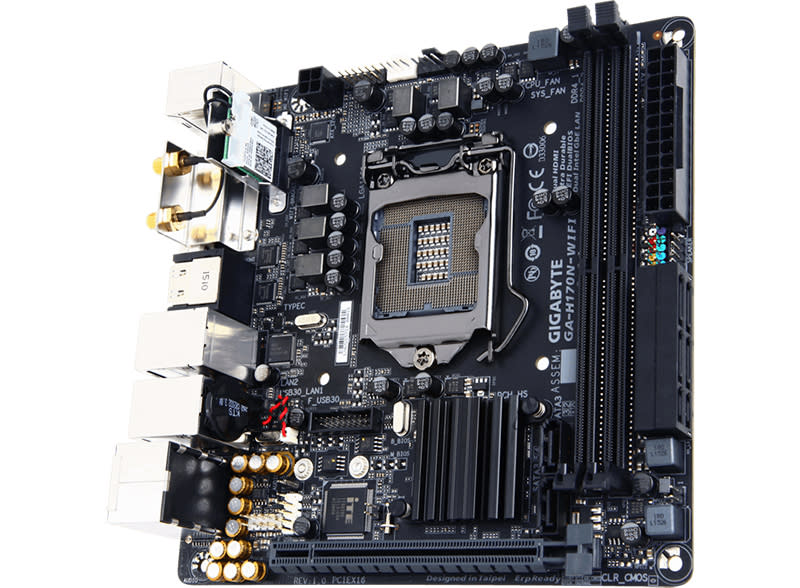
There is also an M.2 connector located toward the rear of the motherboard that will support both PCIe 3.0 and SATA devices. As a mini-ITX board, there is also just one PCIe 3.0 x16 slot for your graphics card.
The majority of Gigabyte’s B150 boards support DDR3 RAM instead of DDR4. Available in the mATX form factor, they will compete with the boards from ASRock and ASUS to find their way into cheap, small form factor builds. So far, we only have details on one board to support the newer memory standard, the Gigabyte B150M-D3H mATX board.
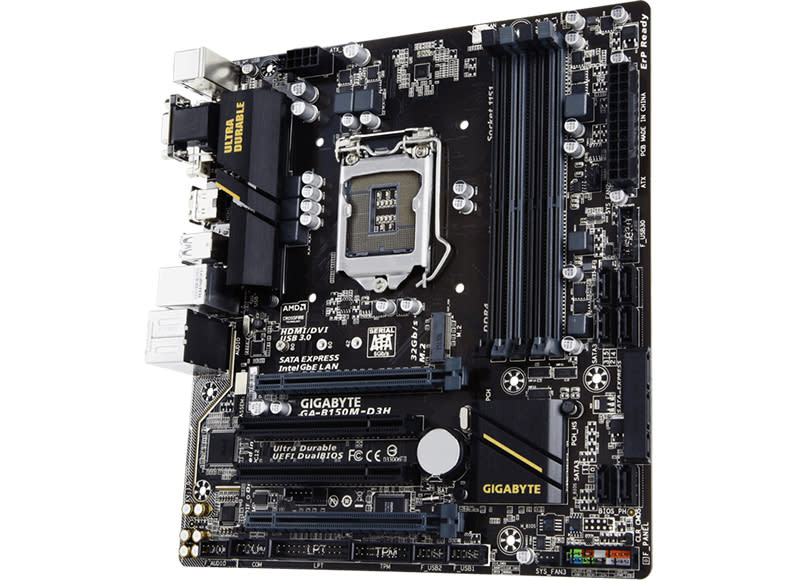
It will support four DIMMS of DDR4 memory for a total of 64GB, and come with an M.2 slot, one SATA Express connector, and six SATA 6Gbps connectors. Networking is handled by an Intel Gigabit Ethernet LAN controller.
MSI
MSI continues the trend with a whopping total of 35 H170, H110, and B150 boards launched.
Select MSI H170 and B150 motherboards complete MSI’s Performance and Arsenal Gaming series of boards, providing price-conscious gamers with a wider range of boards to choose from.
But save for a handful of ATX and mini-ITX boards, the majority of the new motherboards come in the micro-ATX form factor under MSI’s Pro series boards, which are aimed at businesses and are geared toward improving productivity.
As its name suggests, the H170A Gaming M3 is an ATX gaming motherboard that retains many of the key features from MSI’s Z170 Gaming motherboards. DDR4 Boost, Audio Boost 3, and Nahimic Audio Enhancer make an appearance again, alongside the new Killer E2400 Ethernet controller for lower latency while gaming.
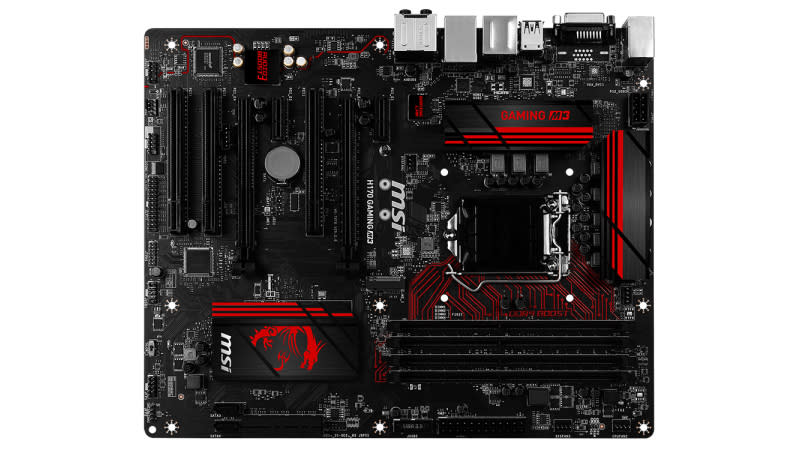
It is also outfitted with a single M.2 slot that is able to run at PCIe 3.0 x4 off the chipset itself, or in SATA mode if you so choose. The slot also supports NVMe 2.5-inch SSDs like the Intel 750 series drives via an optional Turbo U.2 host card.
The H170A PC Mate is a Pro series mATX board with business-oriented features like Intel’s Small Business Advantage and Small Business Basics solutions, which help improve data security, productivity, and overall system performance for small businesses. Other key features include an M.2 slot and USB 3.1 Gen.2 Type-A slots.
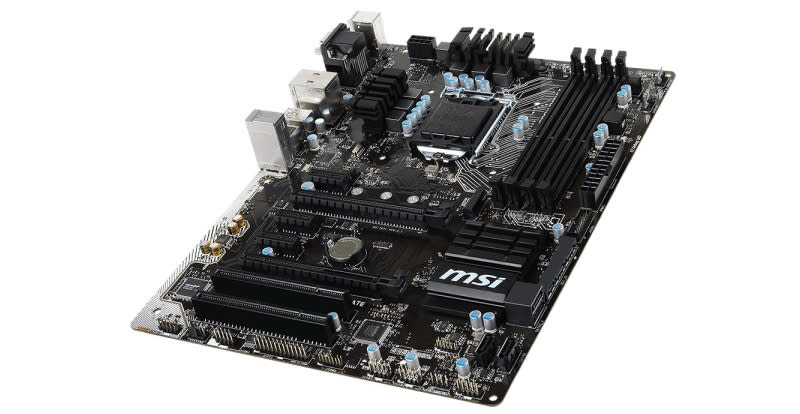
The B150 Gaming Pro ATX motherboard has many of the same features as its H170 counterpart. It also has the same Mystic Light LED lighting strip.
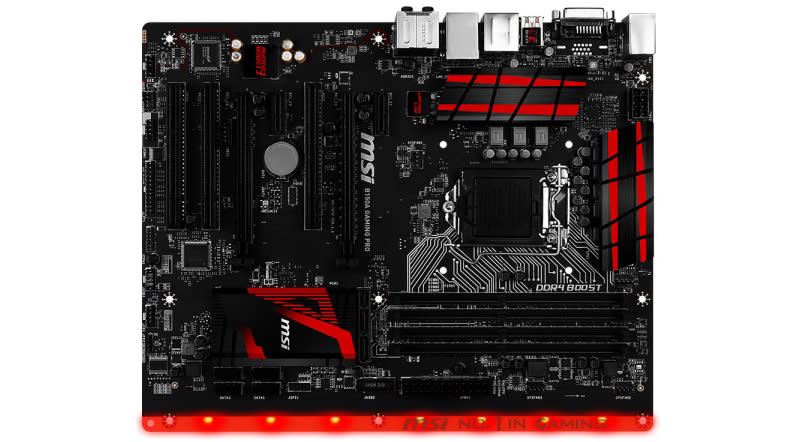
The difference between the boards stem mainly from the chipset, with B150 supporting fewer PCIe 3.0 lanes on the chipset and lacking performance-oriented features like support for RAID.
MSI also announced two variants of the B150 Bazooka boards – the B150M Bazooka D3 and the B150M Bazooka. Both are mATX boards, but the D3 supports DDR3L RAM instead of DDR4.
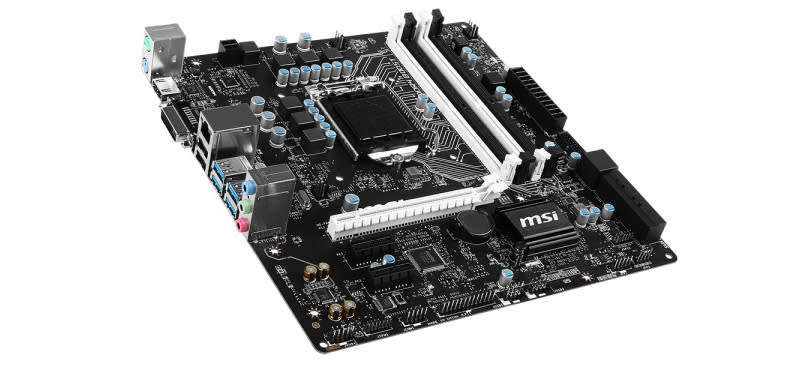
Both boards bring up the budget end of MSI’s gaming motherboard lineup, and feature previous generation components like Military Class 4 capacitors and chokes and Audio Boost.
At the most affordable end of the spectrum are the H110 motherboards, but we don’t yet have many details on the H110 boards, save that they will come in nine different flavors and include mini-ITX, mATX, and ATX boards.
For a full list of MSI’s new motherboards, please refer to the table below:
